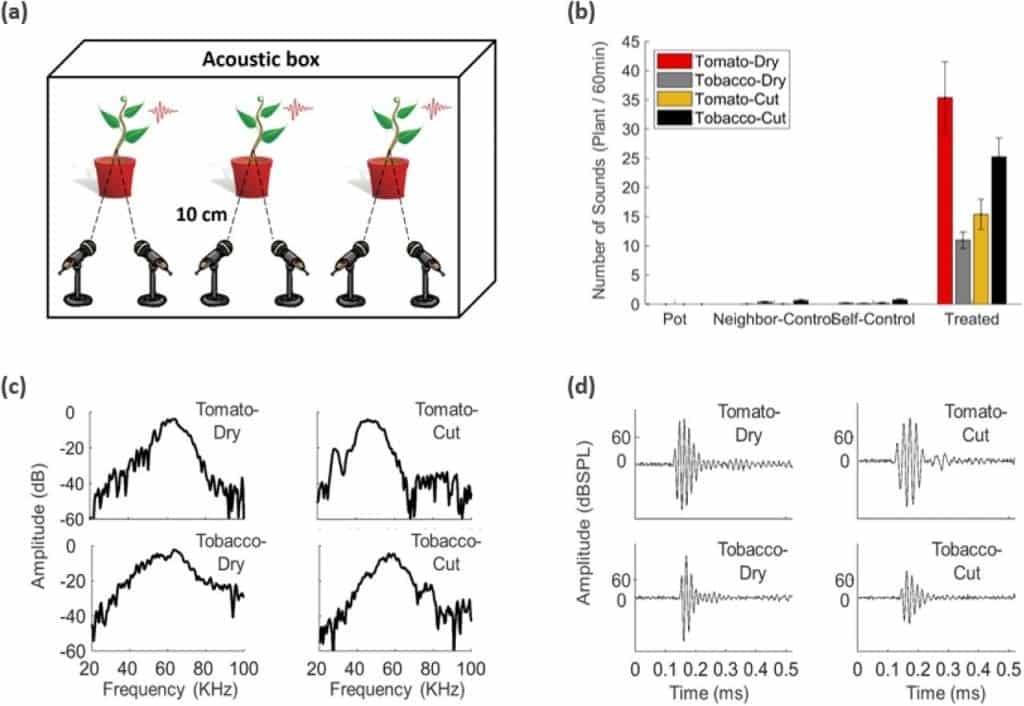New research shows that plants can actually talk, but don't expect them to tell you something or spoil an episode of your favorite series.
The new study shows that plants “talk” by creating frequencies in response to their surroundings. In other words they react by transmitting information, and perhaps interact.
These “reactions” in plants, which we might see as analogous to human senses, are actually nothing new: in recent years we have learned that plants are able to “see”, hear and smell. And now with this discovery we are one way from the completion of the five human senses in some species of the plant kingdom.
For the first time the plants have been registered as they emit airborne sounds when stressed. According to the researchers, this could open up a new field ofprecision farming which “listens” to water-hungry crops to feed them more effectively.
The study was conducted by Itzhak Khait and his colleagues at Tel Aviv University in Israel. Researchers have discovered that tomato and tobacco plants (as well as a variety of cactus, the one you see in the main photo of the post) "speak". They do this with sounds at frequencies that humans cannot hear when faced with situations such as running out of water or being cut off.
The study on plants that speak by emitting ultrasound.

food has explained in his research: “To study airborne sound emissions from plants we first built a reliable recording system, in which each plant was recorded simultaneously with two microphones inside an acoustically isolated anechoic chamber. We recorded tomato (Solanum lycopersicum) and tobacco (Nicotiana tabacum) plants under different treatments: drought stress, (stem) cutting and controls. We focused on the ultrasonic sound range (20-150 kHz), where the background noise is weakest”
On average, drought-stressed tomato plants produced 35 sounds per hour, while the tobacco plants produced them 11 and plants without stress produced less than one sound per hour, on average.
The researchers trained a machine learning model to discriminate between plant sounds and wind, rain and other environmental greenhouse noises in order to correctly identify the source of stress.
“After we managed to filter out greenhouse noises, we were able to use 'clean' plant sounds to classify their conditions in the greenhouse. The results of the sound box recordings showed that the drought-stressed plants made significantly more sounds than the control plants.".
Sound exists in both low and high frequencies. Humans cannot hear the entire frequency spectrum around us. If we could, we would probably be distracted and anxious always listening to the frequencies around us. We would pester ourselves with the radio frequencies of cell towers near us or even cooking a frozen meal in the microwave.
Thankfully, the range of human hearing is typically considered to be only 20 Hz to 20 kHz.
With the above in mind, we can now understand why humans are not sensitive to the sounds made by plants.
How do plants make sounds?
One possible mechanism by which plants speak by emitting ultrasound is cavitation (the process by which air bubbles form and explode in the xylem).
“Cavitation explosions have been shown to produce vibrations similar to those we recorded. We have not yet tested whether these sounds are transmitted through the air at intensities that other organisms can also detect. Regardless of the specific mechanism that generates them, the sounds we record carry information. If these sounds were used for communication that a plant could benefit from, natural selection could favor traits that would increase their transmission.”
Further research needs to be conducted to find potential applications that this discovery may have.


